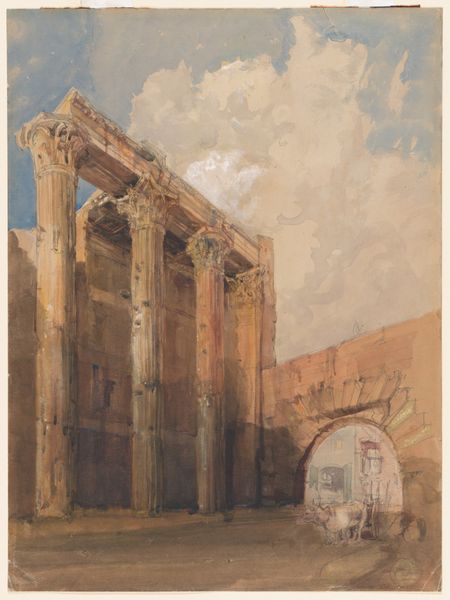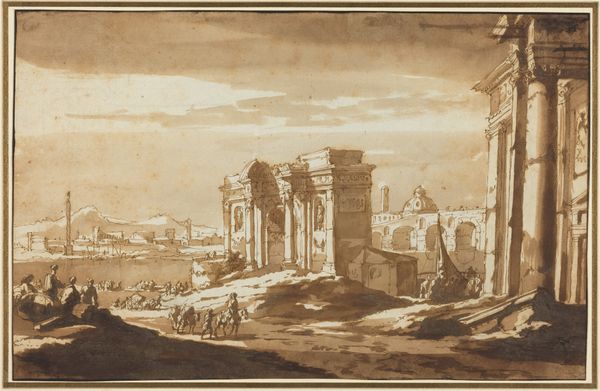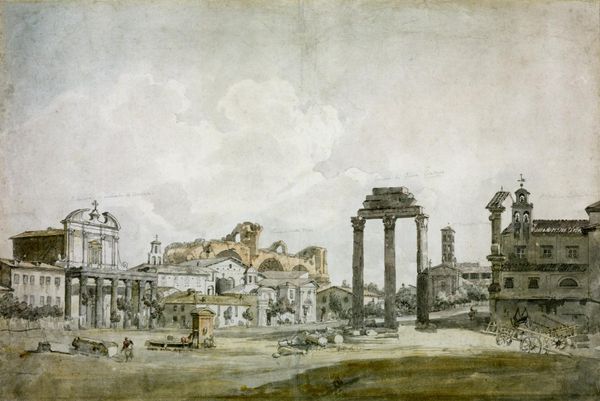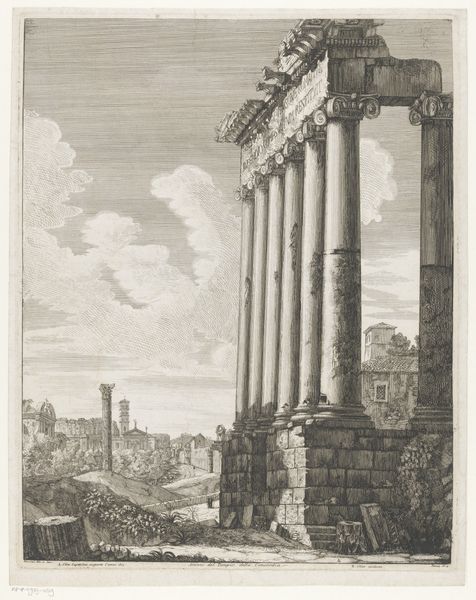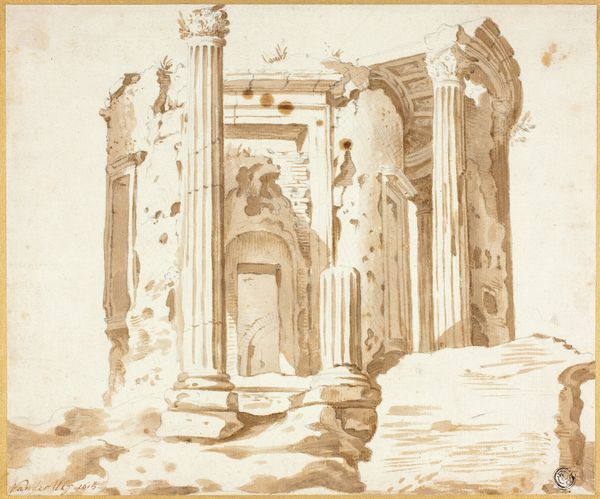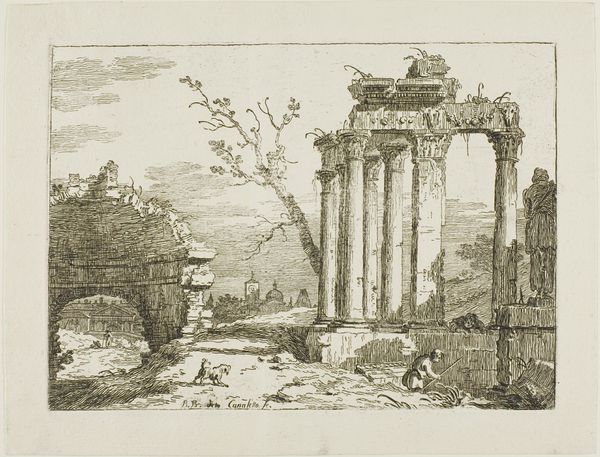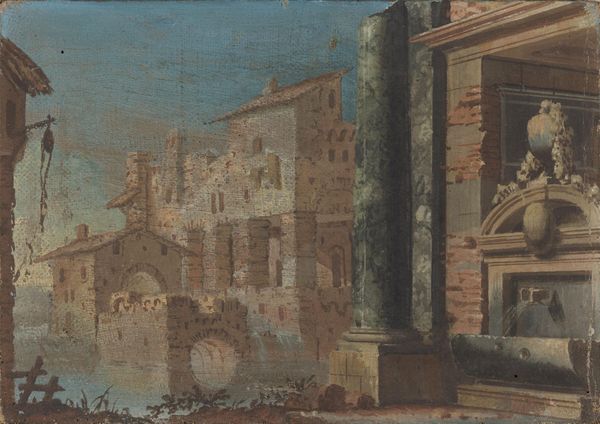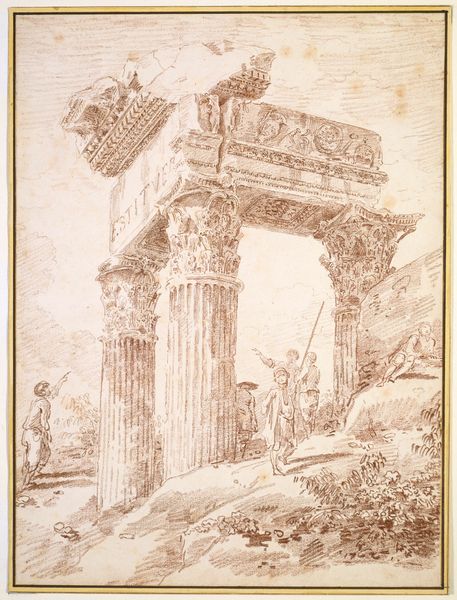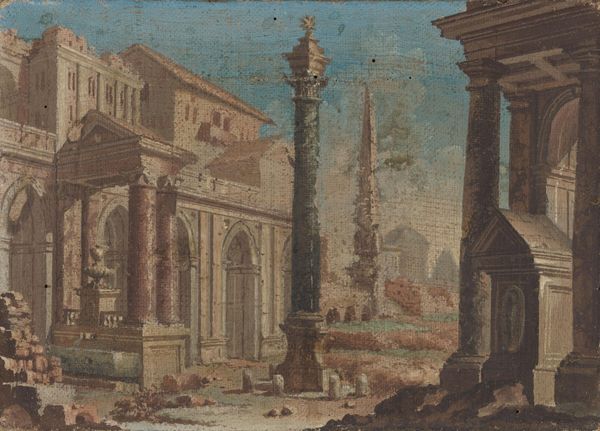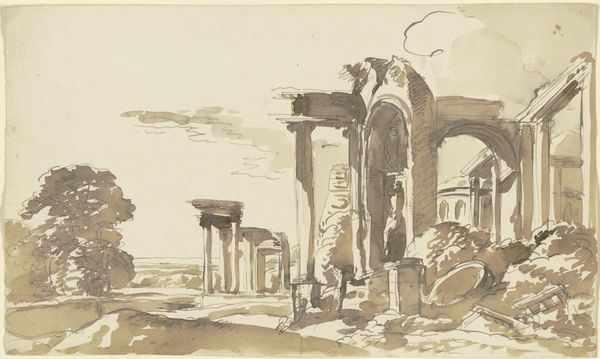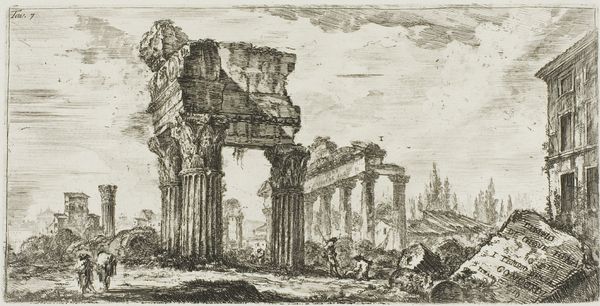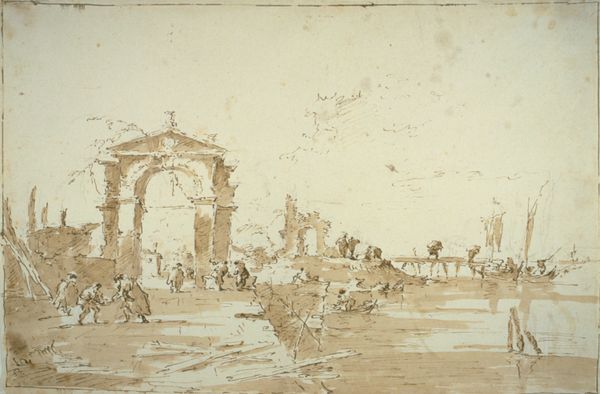
painting, watercolor
#
painting
#
landscape
#
watercolor
#
ancient-mediterranean
#
history-painting
#
watercolor
Copyright: Public Domain: Artvee
Editor: Here we have David Roberts's 1838 watercolor, "Fragments of a Colossal statue at the Memnonium, Thebes". The ruinous scale of the site juxtaposed with the figures on horseback gives me such a stark feeling of the passage of time. How do you interpret this work? Curator: The painting embodies more than just the "passage of time;" it visualizes the impact of colonial exploitation on ancient civilizations. Roberts romanticizes the decay while implicitly erasing the contemporary socio-political context of the region. Note how the Western figures on horseback are central, subtly reinforcing a Eurocentric perspective, dwarfing the local people. Editor: I see what you mean. It's not just a historical record; it's presenting a particular narrative. Does the medium, watercolor, play into that at all? Curator: Absolutely. Watercolor, with its delicate and translucent quality, softens the harsh realities of archaeological extraction. It aestheticizes what could be considered a form of cultural dispossession. How might we consider the artistic license taken here in contrast with contemporary repatriation movements? Editor: That’s a compelling question. So, Roberts isn't just capturing a scene, but participating in a dialogue – perhaps unwittingly – about power and representation? Curator: Precisely. The painting isn’t just about ancient ruins; it is about the act of looking, interpreting, and ultimately, possessing a cultural history through a Western lens. It also speaks to the West’s fascination with orientalism. Editor: I’ve always seen these paintings as beautiful historical records, but I realize now there's a lot more going on beneath the surface. Thank you. Curator: And thank you for prompting me to consider this piece more carefully. It is a reminder that art always participates in larger conversations about identity, power, and history.
Comments
No comments
Be the first to comment and join the conversation on the ultimate creative platform.
